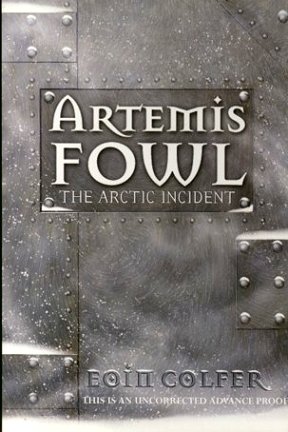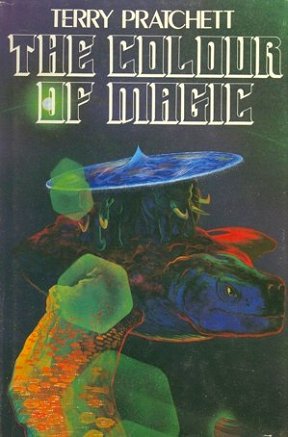

|
An Introduction to Collecting and Selling
|
|
Last month in my article on Andre Norton I observed that "in the best of Norton's work ... the writing resonates with the adult reader even after many decades have passed." A child's view of the world is divided quite simply into Good and Evil - black and white, with none of those pesky shades of gray that cause us grownups so much trouble. I once had a discussion with my youngest niece about why I let my son collect Pokemon cards but didn't like him watching the show. With innocent but very direct childlike honesty, she asked if this wasn't an example of hypocrisy. I replied that I preferred to think of it as compromise, a concept that she would learn to understand and appreciate as she grew older.
|

|
But aren't there times when us grownups want to shed the burden of gray perception, to return to the days when it all really was so simple? When the bad guys wore black hats, and the good guys always knew what to do? And isn't that the heart of nostalgia - a longing for a return to a simpler, better time? Nostalgia is an incredibly powerful motivator in the world of book buying, prompting both collectors and non-collectors to cheerfully pay the price for some childhood favorite - to recover a lost bit of their youth. So important is this force that Alibris used it as a central theme in one of their advertising campaigns.
Young Adult SF and fantasy, particularly modern examples of the genre, represents a more sophisticated style of writing and exploration of theme. Issues of Good and Evil are generally still central to the story, the protagonists' perceptions are still basically rendered in black and white, but there is some shading of gray between. Evil characters may be portrayed with some sympathetic characteristics, while the hero may have feet of clay. A few common themes include children with special knowledge or abilities being taken advantage of or ignored by adults, children coming in contact with aliens or magical creatures, orphans in search of a place or family where they can belong, quest stories, the "King Arthur" theme in which an ordinary child's extraordinary heritage is revealed, animal stories (magical or otherwise) in which there are no humans, and many more.
Young Adult SF and Fantasy, especially that produced by British authors, has been a remarkably strong and fast-growing field in the last several years. Only those just awakened from a year's long coma would be unaware of JK Rowling and the Harry Potter franchise juggernaut. Other Brits of note in the YA field include:
Philip Pullman - His Dark Materials trilogy, the Sally Lockhart series, and more
Eoin Colfer - Artemis Fowl

Garth Nix - Sabriel, Lirael
Paul Stewart, Chris Riddell (illust.) - The Edge Chronicles
William Nicholson - Wind on Fire trilogy
Brian Jacques - Redwall series
Terry Pratchett - Discworld series

Steve Augarde - The Various
Philip Reeve - Mortal Engines
Jonathan Stroud - Bartimaeus Trilogy
David Almond - The Fire-Eaters
Patrick Cave - Sharp North
Kate Thompson - Switchers, Midnight's Choice, and Wild Blood
Sylvia Waugh - the Mennyms series (fantasy), and the Ormingat series (SF)
Cliff McNish - The Doomspell Trilogy
Robin Jarvis - The Deptford Mice Trilogy
Children's and Young Adult fiction is an extremely hot market right now, and certainly some of the driving force behind the rising market is speculative investment. Publishers and booksellers, as well as collectors, are constantly looking for "the next Harry Potter," and any new fantasy or SF author who gets published to decent reviews and fair sales gets a lot of attention from the market. As I've noted in this column several times before, the UK publishing industry is well-suited to producing instant collectibles because they tend to publish in very small hardback print runs (often just a few thousand) simultaneously with a larger paperback release. Thus, when a particular author becomes popular, there is an instant shortage of available hardback first printings, and prices climb very high, very fast.
If you take a look at fixed price listings for the titles and authors above, note the significantly higher price for the UK editions of the books. This stands to reason, since the true first is the UK edition, which is generally printed in small first printing runs. And in most cases the books have already become very popular by the time they are published in the US, which is reflected in the large print runs. Hint: even if the US edition is common as dirt, the US proofs and ARCs could still hold considerable value. A strategy I've used successfully in the past is to buy as many proofs or ARCs as I can find at reasonable prices, then bring them to author signings. For the right title, this could mean an easy $50 to $100 or more in profit.
So, one tip for succeeding in the children's/young adult field is to keep an eye on UK publishers:
Penguin/Viking-UK (Puffin division)
Hodder and Stoughton
click on Browse by Category, then follow the prompts: Children's, Children's Fiction,
Science Fiction and Fantasy
Also, spend some time on the UK book sites. Amazon UK (especially the Hot 100 list and Hot 50 Pre-release books, or do a QuickSearch in the Children's Books category and leave the search box empty, then sort results by Bestselling or by Average Customer Rating or by Publication Date Newest).
Questions or comments?
| Forum
| Store
| Publications
| BookLinks
| BookSearch
| BookTopics
| Archives
| Advertise
| AboutUs
| ContactUs
| Search Site
| Site Map
| Google Site Map
Store - Specials
| BookHunt
| BookShelf
| Gold Edition & BookThink's Quarterly Market Report
| DomainsForSale
| BookThinker newsletter - free
Copyright 2003-2011 by BookThink LLC
Contact the editor, Craig Stark
editor@bookthink.com
